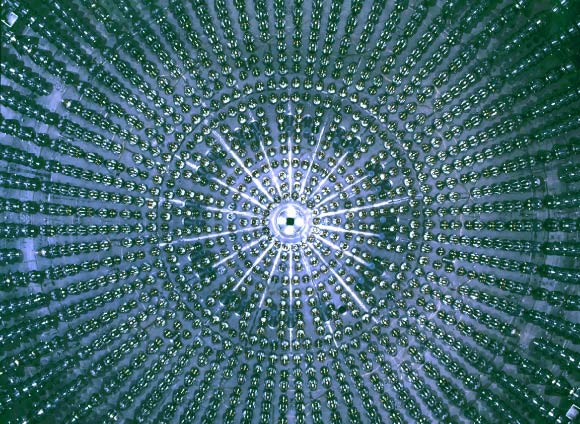An underground particle detector called the Borexino detector has detected 53 antielectron neutrinos emanating from the Earth, so-called geoneutrinos.
Source: Sci News
Neutrinos and their antimatter counterpart, antineutrinos, are subatomic particles that interact so rarely with other matter they can pass untouched through a wall of lead stretching from the Earth to the Moon.
These particles are continually being produced in the nuclear reactions of stars, in the fission reactions that drive nuclear power plants, and deep in Earth’s crust and mantle by the radioactive decay of elements such as uranium-238 and thorium-232.
Every second, about six million of geoneutrinos penetrate every square centimeter of our planet’s surface.
The Borexino detector, located at Laboratori Nazionali del Gran Sasso, Italy, is one of the few detectors in the world capable of observing these elusive particles.
“Geoneutrinos are the only direct traces of the radioactive decays that occur inside the Earth, and which produce an as yet unknown portion of the energy driving all the dynamics of our planet,” said Borexino coordinator Professor Livia Ludhova, head of the neutrino group at the Nuclear Physics Institute at Forschungszentrum Jülich.
Professor Ludhova and colleagues analyzed 3,263 days of data collected by the Borexino detector between December 2007 and April 2019.
The researchers detected a total of 53 geoneutrinos from uranium-238 and thorium-232.
They also estimated the total radiogenic heat of the Earth to be 38.2 terawatts (TW).

“The hypothesis that there is no longer any radioactivity at depth in the mantle can now be excluded at 99% confidence level for the first time,” Professor Ludhova said.
“This makes it possible to establish lower limits for uranium and thorium abundances in the Earth’s mantle.”
“These values are of interest for many different Earth model calculations. For example, it is highly probable (85%) that radioactive decay processes inside the Earth generate more than half of the planet’s internal heat, while the other half is still largely derived from the original formation of the planet.”
“Radioactive processes in the Earth therefore provide a non-negligible portion of the energy that feeds volcanoes, earthquakes, and the planet’s magnetic field.”
The findings are published in the journal Physical Review D.
Source: Sci News

































Leave a Comment
You must be logged in to post a comment.